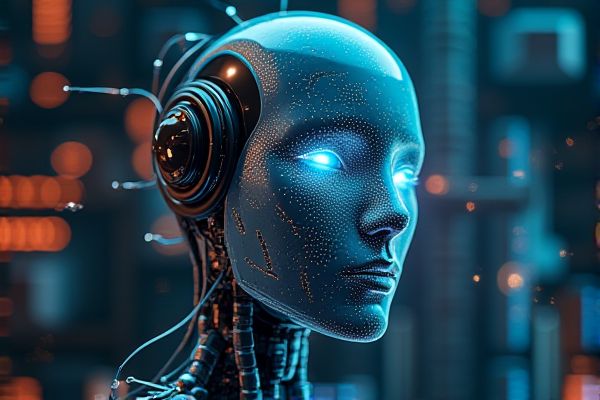
AI enhances computer vision by enabling machines to interpret and understand visual data from the world. Deep learning algorithms process large datasets, allowing computers to recognize patterns, objects, and scenes with high accuracy. Applications span various industries, including healthcare for medical imaging analysis and automotive for autonomous vehicles. Improved efficiency and accuracy in image recognition lead to innovative solutions across sectors, transforming how we interact with technology.
AI usage in computer vision
Object Detection
AI usage in computer vision, particularly in object detection, presents significant advantages across various industries. For instance, autonomous vehicles rely on enhanced object recognition to navigate environments safely. Retailers can optimize inventory management through real-time detection of products on shelves. By implementing AI-driven object detection models, businesses may improve efficiency and reduce operational costs.
Image Segmentation
AI has the potential to enhance computer vision through techniques such as image segmentation, which allows for the accurate identification of objects within images. This capability can be beneficial in fields like healthcare, enabling improved diagnostics by isolating regions of interest in medical images. Institutions like Stanford University are exploring how image segmentation can aid in detecting tumors or other abnormalities. The efficiency gained from AI-driven segmentation can lead to faster and more precise analyses across various applications.
Facial Recognition
AI usage in computer vision, particularly in facial recognition, offers significant advantages in security and accessibility. For example, institutions like airports utilize this technology to enhance passenger identification and streamline processes. The potential to reduce human error and improve efficiency can result in enhanced safety measures. Various sectors, including law enforcement and retail, might benefit from adopting advanced facial recognition systems.
Medical Imaging
AI in computer vision has the potential to significantly enhance medical imaging analysis. For instance, algorithms can be trained to detect tumors in radiology scans, increasing diagnostic accuracy. The use of AI can lead to faster processing times, allowing for timely treatment decisions in hospitals. New developments, such as deep learning techniques, may further improve the identification of abnormalities in complex imaging data.
Autonomous Vehicles
AI in computer vision has the potential to enhance the safety and efficiency of autonomous vehicles. By improving object recognition and real-time decision-making, algorithms facilitate accurate navigation in complex environments. Companies like Waymo leverage these advancements to reduce the likelihood of accidents. The continued development in this field could lead to widespread adoption and increased reliance on autonomous driving solutions.
Image Classification
AI can significantly enhance image classification by automating the process of identifying and categorizing visual data. By leveraging deep learning techniques, such as convolutional neural networks, the accuracy of classifying images improves considerably. For example, institutions like Stanford University utilize advanced AI models to streamline image recognition tasks across various applications. This can lead to faster and more efficient processing of large datasets, promoting better decision-making in industries reliant on visual data analysis.
Pose Estimation
AI in computer vision, particularly in pose estimation, offers the potential for enhanced human-computer interaction and improved accuracy in various applications. For instance, institutions like MIT have developed algorithms that can accurately determine body positions in real-time. This capability can be advantageous in fields such as sports analytics, where understanding an athlete's movements is crucial for performance improvement. The chance to integrate pose estimation into augmented reality systems further opens opportunities for user engagement and experience.
Optical Character Recognition (OCR)
AI in computer vision enhances Optical Character Recognition (OCR) by improving accuracy in text extraction from images. For example, machine learning algorithms can identify and differentiate fonts, making it easier for OCR systems to process documents. The possibility of integrating these advanced capabilities into digital archiving processes could streamline data retrieval. Businesses could leverage such technologies to automate data entry, reducing human error and increasing efficiency.
Augmented Reality
AI enhances computer vision by improving image recognition accuracy, facilitating real-time object detection, and enabling advanced image processing techniques. In augmented reality, AI can create more immersive experiences by accurately overlaying virtual elements onto the real world, adapting to user interactions. For example, developers at institutions like Stanford University are exploring AI-driven applications for augmented reality in educational settings. These advancements present the possibility of increased efficiency and user engagement across various industries.
Anomaly Detection
AI can significantly enhance computer vision applications by improving anomaly detection capabilities. Machine learning models, such as convolutional neural networks (CNNs), can identify deviations in visual data, making them valuable for industries like manufacturing. By detecting defects early, companies like Siemens can reduce waste and improve product quality. This capability presents an opportunity for organizations to optimize processes and enhance operational efficiency.
 techknowy.com
techknowy.com